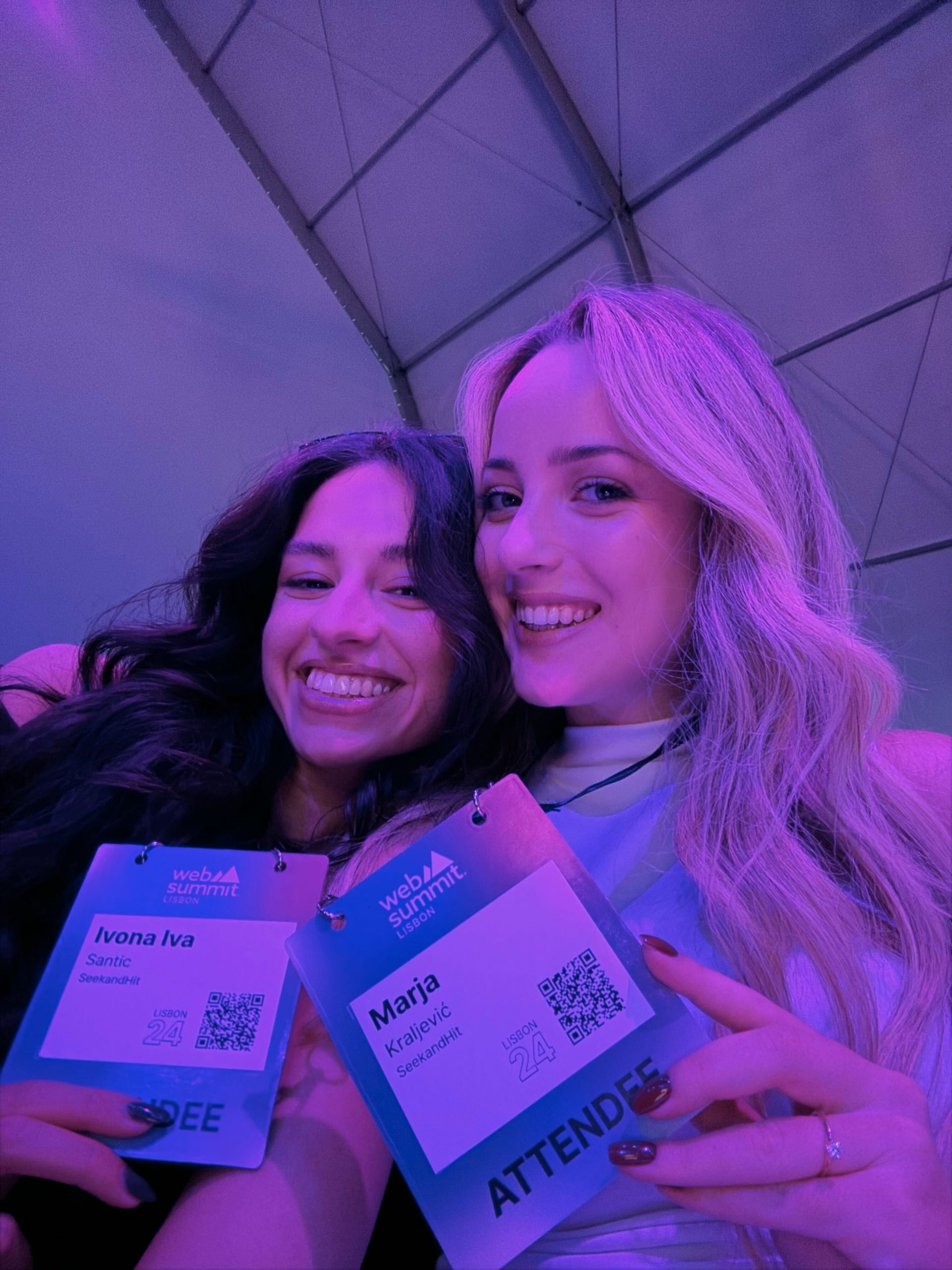We attended the Web Summit in Lisbon this November, returning with five key takeaways that shape how we approach marketing and innovation moving forward. From the importance of balancing performance and branding strategies to understanding the unique expectations of Gen Z and the rise of creator-driven, community-focused content, the event was brimming with insights.
But that’s not all—discover how these trends are reshaping the future of marketing and what steps you can take to stay ahead. Ready to dive deeper? Keep reading to uncover actionable ideas that could redefine your approach to success.
Top 5 Takeaways
1. Successful marketing combines both brand and performance efforts; over-reliance on one leads to either unsustainability or high costs
T. Sabaliauskiene, in a talk titled The Performance Marketing Headache: Can Brand Love Fit in a Spreadsheet? explains the importance of combining performance marketing and branding activities for sustainable business success.
What you should know:
Performance marketing delivers short-term results, focusing on the ROI and making it essential for startups and resource-constrained businesses that need fast results
Performance Marketing alone on the other hand is unsustainable—without investing in branding, long-term growth is at risk
Building brand love is most effective when all tools are included, such as: SEO, influencer collaborations, market localization etc.
Even though branding ensures a lasting impact, it is quite costly in the short run
NordVPN’s Success Story: By blending both strategies, NordVPN achieved significant branding and performance results, including 18% growth in brand consideration, 66% growth in direct billings, and 50% growth in paid channels.
2. Gen Z is shaping how brands connect with consumers, by embracing Gen Z’s unique traits and preparing for the possibility of failure, brands can turn mistakes into opportunities for growth
J. Richards delves into how brands can recover from marketing failures, a challenge even the most beloved companies face. He also explores Gen Z’s unique approach to engaging with brands, debunking common myths about this influential generation.
What you should know about Gen Z:
Common Myths About Gen Z:
They are too young to make changes
They love polished social media
They are easily grouped into one demographic audience
They will cancel your brand forever if you do something wrong
Realities of Gen Z Engagement:
They spread information rapidly
They expect authenticity and adaptability from brands
They always ask for the “why” rather than taking information at face value
They trust their favorite creators
They won’t cancel your brand forever
Strategies for Risk Mitigation:
Test ideas quickly to gauge responses
Repurpose elements of previously successful campaigns
Involve diverse company teams in brainstorming and decision-making
Stay current with trends, as they evolve at lightning speed
3. Today’s relentless focus on efficiency reduces value, turning innovation into a race to the bottom
Dan Gardner, Co-founder and Executive Chairman of Code & Theory, highlights the rapid pace of technological evolution and emphasizes the need for businesses to radically rethink their approach to customer experience, redefining what marketing will look like in the future.
Key takeaway:

It’s crucial to distinguish between emotional technology (tools that evoke genuine feelings) and information technology that merely pretends to engage emotions while prioritizing efficiency.
With AI dominating conversations, many are overly focused on optimizing efficiency, often at the expense of addressing real consumer problems. Prioritizing efficiency and eliminating friction risks turning innovation into a race to the bottom, where value and meaningful connection are lost.
What brands should do:
1. Embrace friction
While efficiency removes barriers and makes processes easier, friction is necessary to create memorable experiences.
People want to make their own decisions by having choices to choose from but not feeling overwhelmed by too many options
2. Design for Wonder:
Utility satisfies needs, but wonder sparks desire and emotional connection.
Example: Travel planning should feel exciting, not like a chore.
3. Build for Relationships, Not Just Connections:
Connections are transactional and fleeting; relationships are personalized and meaningful.
Example: Luxury brands foster relationships by embodying a human-like brand essence.
4. Community-driven content is replacing traditional search – from textual to visual, interactive & social search
Creators are the next evolution of media and are a non-negotiable marketing strategy
Community-driven content > traditional search
It’s important to listen to community apps
Brand personality and 1st party narratives are trending
5. Efficiency doesn’t always equal impact – what’s smooth and efficient is often forgettable, while true effectiveness comes from being bold and interesting
During the talk, Sairah Ashman, Global CEO at Wolff Olins, highlighted how brands often fail to leave a lasting impression. With over 5,000 marketing messages bombarding consumers daily, 90% of users can’t recall the brand behind the message. Even though over $4 trillion is spent annually on marketing, 85% of that budget is wasted on branded assets that go unnoticed, revealing that efficiency doesn’t always equal effectiveness.
From the insights we gathered, creating interesting brands comes down to a few key principles:
Uncover your essence: Pause, reflect, and dig deep to uncover the essence at the core of your brand. Make it distinctive to you and meaningful to your customers.
Do what you can’t: The key to transforming a seemingly crazy idea into something brilliant is the courage to do what others say you can’t.
Rebuild with character: No category is too “dull” to be interesting. In fact, categories that seem “boring” often have the greatest potential for reinvention.
Conviction over consensus: If you’ve created something that everyone likes, chances are, you haven’t created something that anyone truly loves.
Quick summary
Web Summit 2024 offered a clear vision of the future: successful marketing demands balance, adaptability, and a deep understanding of shifting consumer behaviors. By integrating performance-driven strategies with authentic branding, embracing the influence of Gen Z, and leveraging community-driven content, brands can build meaningful connections and drive sustainable growth. The challenge lies in staying agile and innovative in a rapidly evolving landscape—a challenge we’re excited to tackle head-on.







